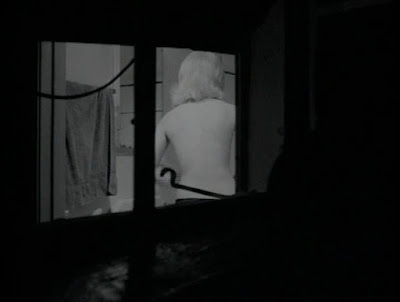The four central characters are all students at Rosedale High School in southern California. Jesse (Michael Mullins) and Johnny (Robert Carradine) are football players, Laurie (Jennifer Ashley) and Sally (Lisa Reeves) are cheerleaders. They’re typical teenagers, obsessed with sex but confused by love, rebelling against authority but craving some sort of structure to their lives, and desperately trying to have a good time because they know this is the best chance they will ever have of having fun.
Sally is dating Duane and Duane is a worrying kind of guy, much too tightly wrapped for his own good and inclined towards violence. Johnny has been trying to steal Sally from Duane and he’s finally getting close to achieving that goal. Everyone thinks Johnny is crazy, Sally thinks he’s crazy, but it’s a charming and rather endearing kind of craziness, the kind of craziness that teenage girls can find pretty attractive.
Jesse has been pursuing Laurie. Laurie’s not too certain how she feels about this. Jesse has the reputation of being the school stud and he’s a start football player who’s much too sure of himself. For Laurie these things are both a turn-off and a turn-on but Jesse has fallen for her pretty hard and she’s the kind of girl who wants a guy who is going to be devoted to her.
Rosedale High School has a fierce football rivalry with nearby Hardin High. It’s more like open warfare than rivalry. This provides the opportunity for plenty of pranks and counter-pranks and these in turn provide much of the movie’s comedy, and in fact some reasonably neat comic set-pieces such as the fire engine theft.
The Pom Pom Girls was pretty obviously inspired by American Graffiti although it’s really a film without much in the way of artistic pretensions. Insofar as it’s trying to achieve anything it’s trying to capture a certain spirit, which it does fairly successfully.
This movie doesn’t try too hard to make its four main characters excessively likeable and sympathetic. Teenagers as a breed are neither likeable nor sympathetic. They’re self-involved, impulsive, selfish, thoughtless and they have the attention span of a gnat. They’re exasperating and these four main characters can be exasperating as well. Jesse is way too intense. Johnny is reckless and unstable and his baiting of Sally’s ex-boyfriend Duane is foolish and immature. It’s the sort of thing a teenager would do. Sally’s behaviour towards Duane is at times unnecessarily cruel. Laurie is emotionally capricious. This is something that I kind of like about his movie. It does have a certain realism to it.
On the other hand these characters don’t quite cross the line into obnoxiousness. They are doing their best to cope with life and they’re being overwhelmed by their hormones and their emotions.
This is a movie that has the attention span of a teenager. It’s almost plotless, jumping from incident to incident with no real sense of purpose or direction, rather like a teenager’s emotions. This actually works in the film’s favour.
If there’s no core plot, there vague outlines of what could have been fully developed plotlines - the Jesse-Laurie and the Johnny-Sally love stories, the friendship between Jesse and Johnny, the conflict between the highly strung Jesse and the authoritarian football coach. the battle between Johnny and Duane over Sally.
There is a bit of nudity but less than you’d expect and the sex scenes are very restrained indeed. This is strictly PG stuff. Even the totally gratuitous girls’ locker room scene with lots of naked cheerleaders has a kind of wholesome quality. These are basically nice if high-spirited girls who just happen not to have their clothes on. The female audience is not neglected either - they get to see the football players hit the showers.
Perhaps the best thing about The Pom Pom Girls is that it manages to avoid being mean-spirited. None of these kids really wants to hurt anybody. If they do hurt anybody it just happens in the thoughtlessly accidental way of teenagers. Mostly they just want to have a good time.
The four leads are all surprisingly not too bad with Robert Carradine being the standout. Cult movie fans will want to look out for Cheryl ‘Rainbeaux’ Smith in a small role.
The movie certainly has an appealing time capsule quality. This is a southern California of innocence and prosperity, of endless beaches, of sunshine, of good-looking football players and beautiful girls. Sex was safe and fun. The worst potential calamity on the horizon is the possibility that their football team might be beaten by Hardin High’s team. Maybe this was all a bit idealised even in 1976 but seeing a movie like this today one can’t help feeling that we’ve lost much of our capacity for innocent fun.
The version included in Mill Creek's Drive-In Cult Classics 32 Movie Collection seems to be the same as BCI's Starlite Drive-In Theater release. It’s an adequate if not great transfer. There has been a more recent Blu-Ray release from Scorpion Releasing but I’m not convinced I’d want to spend the money getting this one on Blu-Ray.
The Pom Pom Girls is pretty enjoyable if you’re in the right mood and your expectations aren’t too high. Recommended.
























